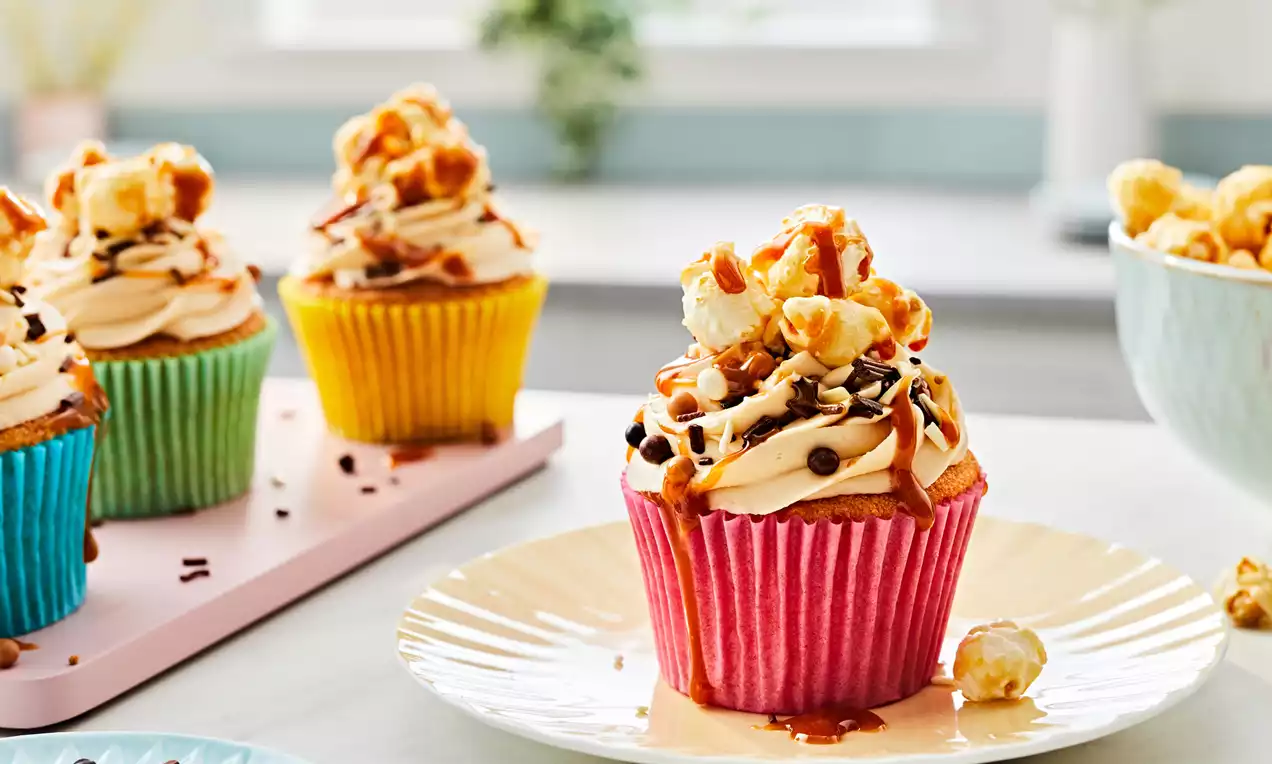
How To Make Salted Caramel
The irresistible sweetness of caramel, combined with the perfect balance of salt and that gooey texture, makes salted caramel a true kitchen favourite. Whether you’re pouring it over ice cream or adding it to your latest bake, it’s a flavour that never disappoints. With a simple salted caramel sauce, you can easily elevate your at-home baking and impress everyone around you. After all, nothing gets taste buds excited like a homemade sweet treat shared with those you love.
Salted caramel is often thought to be tricky, but with this easy recipe, you’ll have it ready in just fifteen minutes. Perfect for drizzling over cheesecake, using in a chocolate caramel tart, elevating your blondies, or creating a showstopping sauce for dipping churros, this simple method ensures delicious results every time.
There’s a difference between salted caramel and caramelized sugar, primarily in flavour and texture:
Caramelized sugar is simply sugar heated until it melts and turns into a deep, sweet flavour. It’s commonly used in sweets, sauces, or as a decoration (such as on flans or crème brûlée), where you want a pure, unaltered caramel taste.
Salted caramel, on the other hand, is a rich sauce and flavour created by combining caramelized sugar with butter, cream, and salt. This gives it a unique sweet and salty flavour. Salted caramel is often used in desserts like ice cream, cakes, cookies, or as a topping for various pastries. It can also be incorporated into buttercreams and cakes for added flavour.
• 200g Granulated Sugar
• 80g Unsalted butter
• 125ml Double cream (slightly warmed)
• Pinch Sea Salt (optional)
• In a stainless-steel pan (avoid using non-stick), heat granulated sugar over medium heat, stirring constantly with a spatula or wooden spoon. Initially, the sugar will form clumps, but it will gradually melt into a thick, amber-coloured liquid as you continue stirring. This process takes about 6 minutes. Be vigilant to avoid burning the sugar.
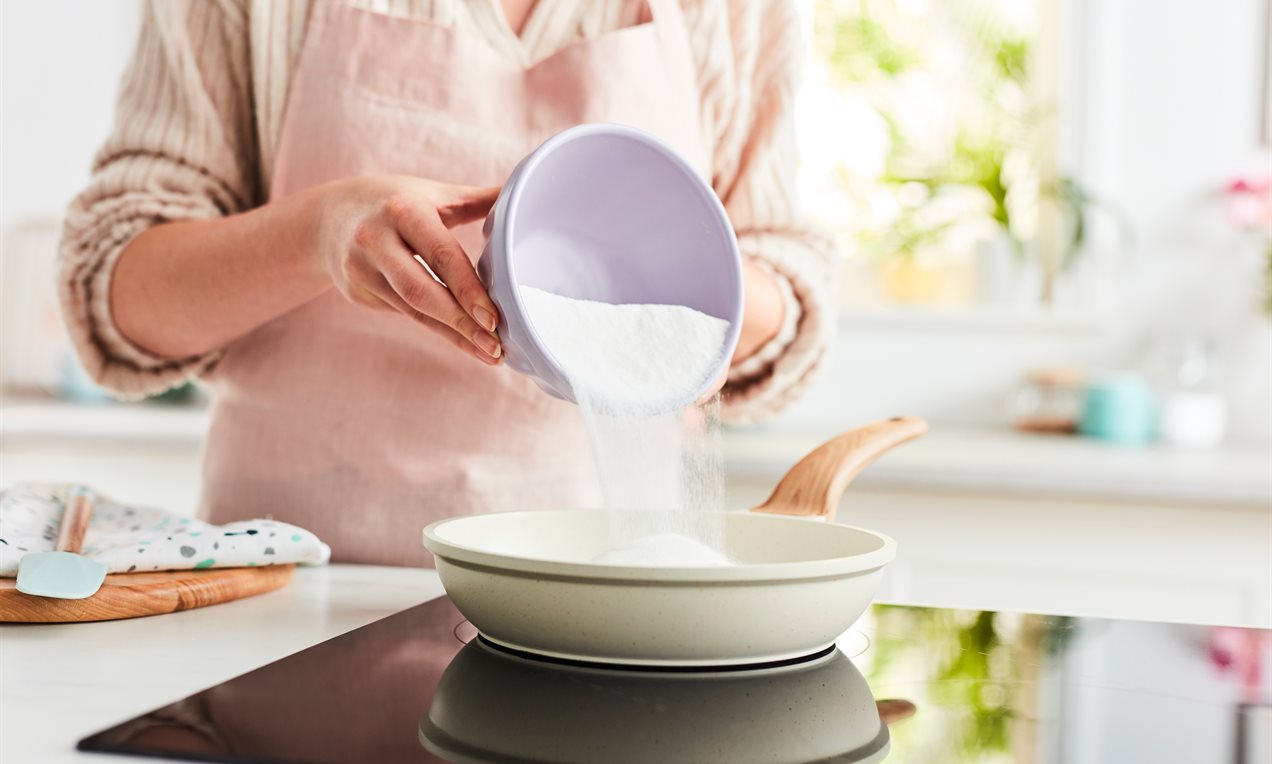
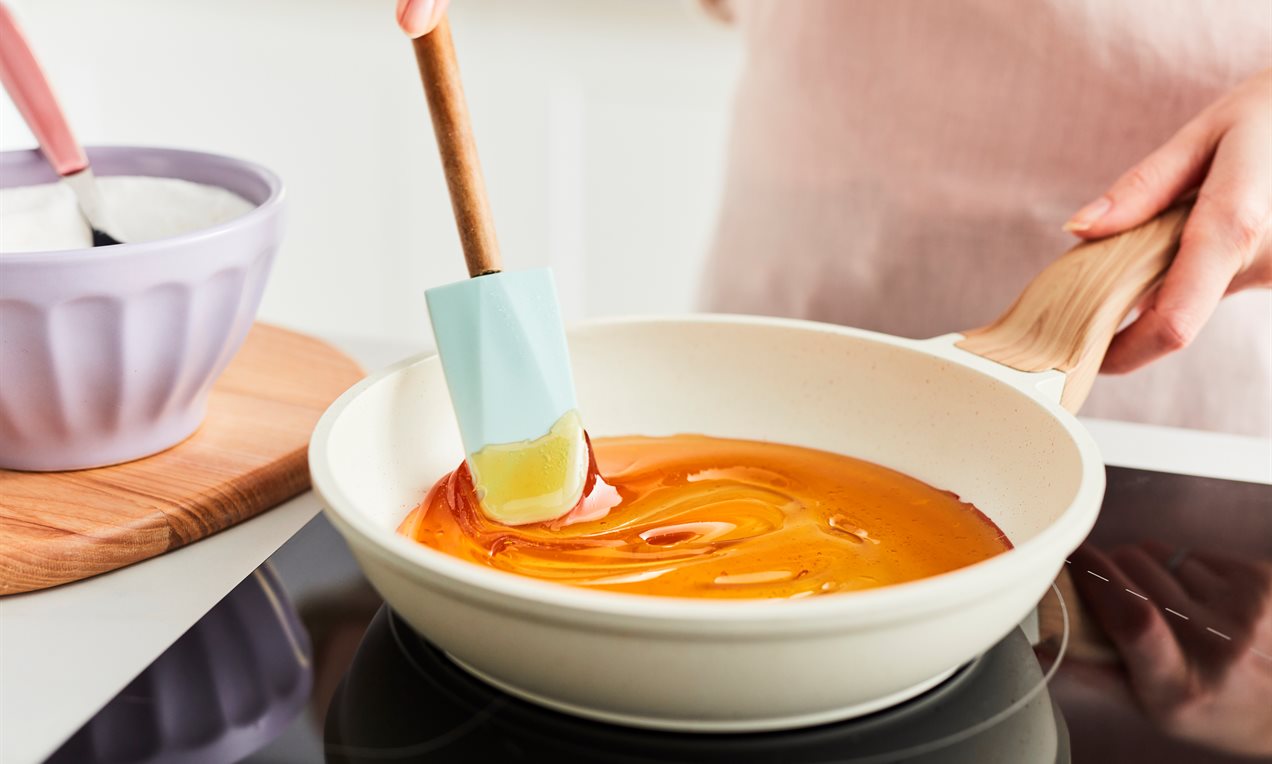
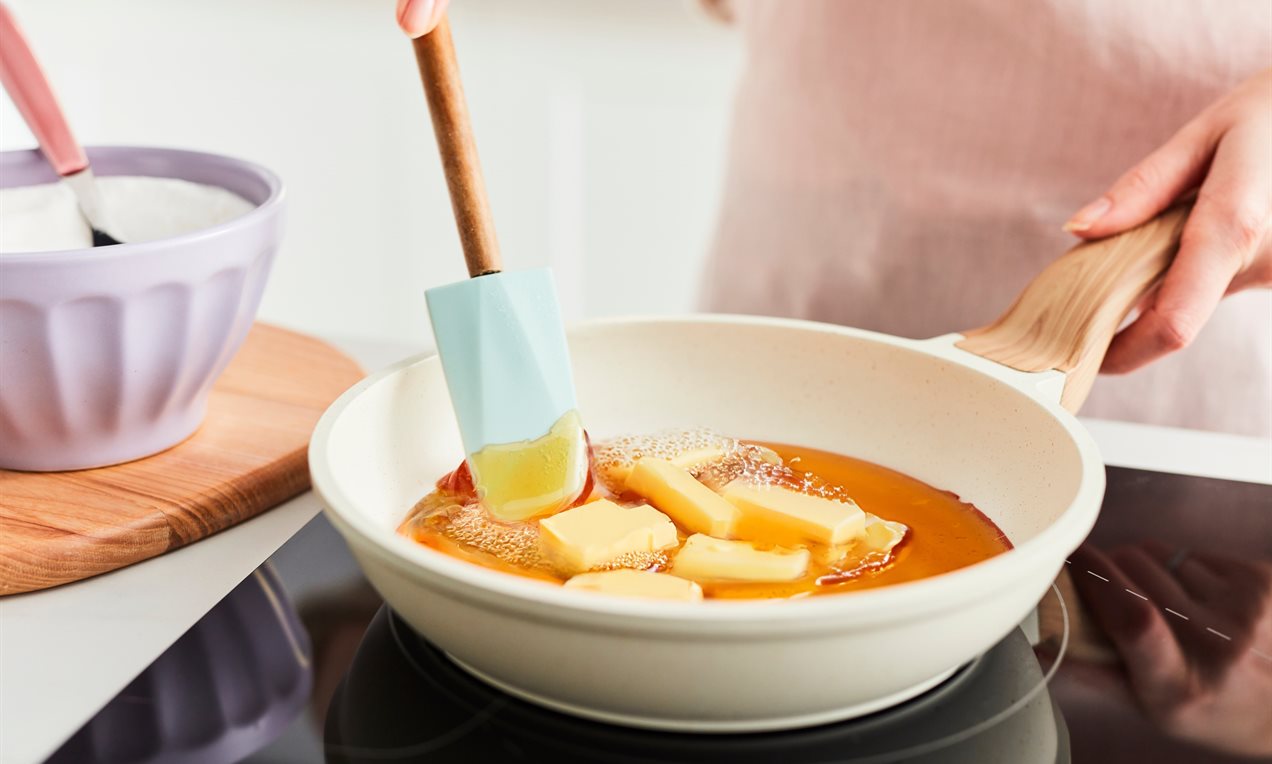
• When the sugar has fully melted, immediately stir in the butter until it is completely melted and combined.
TIP- Be very careful on this step, the caramel will bubble vigorously when the butter is added and may splash.
TIP-If the butter separates or starts to form clumps, remove the pan from the heat and whisk vigorously until the mixture comes back together, whisk for 3–4 minutes, and it will eventually smooth out. Once combined, return the pan to the heat.
• After the butter is fully melted with, stir constantly while slowly pouring in the warmed cream.
TIP- Since the cream is colder than the hot caramel, the mixture will bubble up quickly.
• Once all the cream is added, stop stirring and let the mixture boil for 1 minute.
TIP- if you want to make sure you get a soft caramel, you can use a sugar thermometer, the temperature should reach about 104°C.
• Remove the pan from heat and stir in the salt. Let it cool slightly before using, it will begin to thicken the more it cools down.
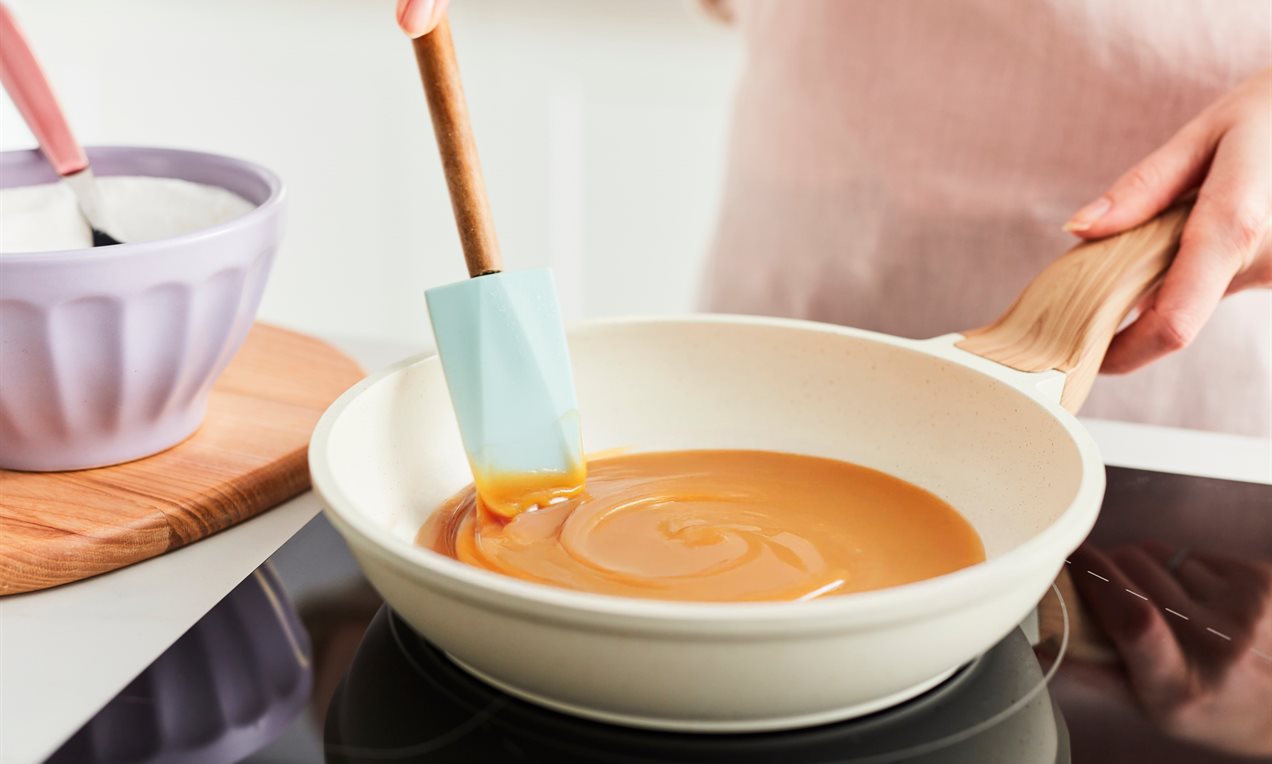
Once the caramel cools, pour it into a sterilised glass jar or container and pop it in the fridge and it will be fine for up to a month. The cooled caramel will be solid, but you can either reheat on the hob or in the microwave to get it back to its liquid sauce consistency before serving.
You can also freeze salted caramel in an airtight container, and it will keep for up to three months. When you want to use it, thaw in the fridge or at room temperature, then reheat on the hob or in the microwave.
1- Consistency of Your Salted Caramel
The main thing you need to look for is the consistency of your caramel as it melts and bubbles. It should be a liquid consistency when it comes off the hob, before you let it cool. If you cool it for too long after taking it off the heat (10 minutes is perfect) it will start to harden. It’s a simple fix to get it back to a good consistency though – simply reheat it in a pan to get it back to a sauce.
You can make the texture of the caramel a little thinner if you want. Just add a couple of tablespoons more double cream and stir.
2- Colour of Your Salted Caramel
Once the mixture is combined and you start heating your caramel it will go from golden all the way to amber. This is the colour you want. If you go too far, it will go a darker brown and you’re in danger of burning it.
Does Salted Caramel Have Nuts?
No, salted caramel does not typically contain nuts. However, some recipes or variations may incorporate nuts for added texture or flavour, but traditionally, salted caramel itself is nut-free. If buying shop buying caramel, then you will need to check the allergy advice.
How long does salted caramel last for?
Homemade salted caramel can last up to one month when stored properly in an airtight container in the fridge. The cool temperature helps maintain its texture and flavour. Before using, always check for any signs of the salted caramel turning, such as changes in texture, colour, or smell. If you plan to keep it longer, you can also freeze it for up to 3 months. Just be sure to thaw it in the fridge before using.
Is Salted Caramel Gluten Free?
Yes, salted caramel is usually gluten-free, as it is made from ingredients like sugar, butter, cream, and salt, all of which do not contain gluten. However, if you're buying salted caramel from the shop, it's important to check the label for any potential gluten-containing.
Is Salted Caramel Vegan?
Salted caramel is not vegan, as it contains butter and cream. However, you can easily make a vegan version of salted caramel by substituting the butter and cream with plant-based alternatives. For example, you can use coconut milk, almond milk, or oat milk for the cream, and plant-based butter or coconut oil for the butter. With these simple swaps, you can enjoy a delicious vegan salted caramel that’s just as rich and creamy.
Caster sugar vs granulated sugar
When making salted caramel, caster sugar and granulated sugar can both be used, but there are some differences:
Caster sugar - has smaller crystals, which dissolve more quickly and evenly. This can help create a smoother, more consistent caramel, as it melts more easily without any graininess. It can be helpful when making caramel, as it reduces the risk of crystallization.
Granulated sugar - has larger crystals and takes a bit longer to dissolve. While it can still be used to make salted caramel, it may take a little more attention to ensure it melts evenly without forming clumps or crystals.
In summary, caster sugar is preferred for a smoother, quicker melting process, but granulated sugar can work just fine with careful attention. If you don't have caster sugar on hand, you can substitute granulated sugar by pulsing it in a blender to make it finer.
With simple instructions and an easy recipe, you’ll soon be making salted caramel and impressing your guests with a range of desserts. Why not try our Salted Caramel Watercooler Buttercream Cake, Salted Caramel Praline Golden Egg Trifle, Salted Caramel Tartletsor Gluten Free Salted Caramel Blondies?